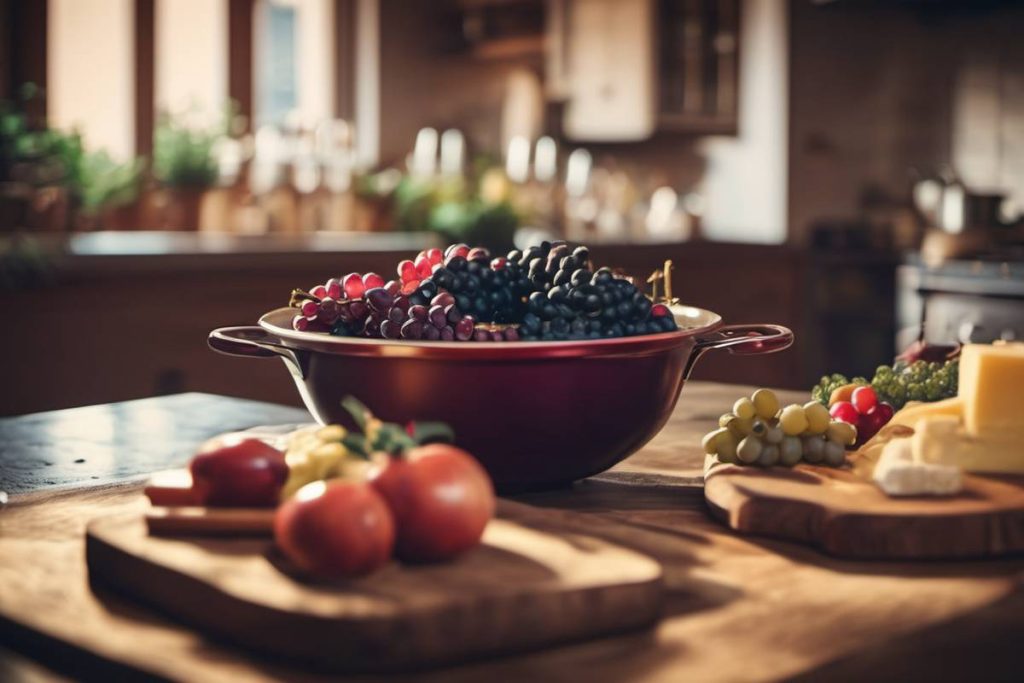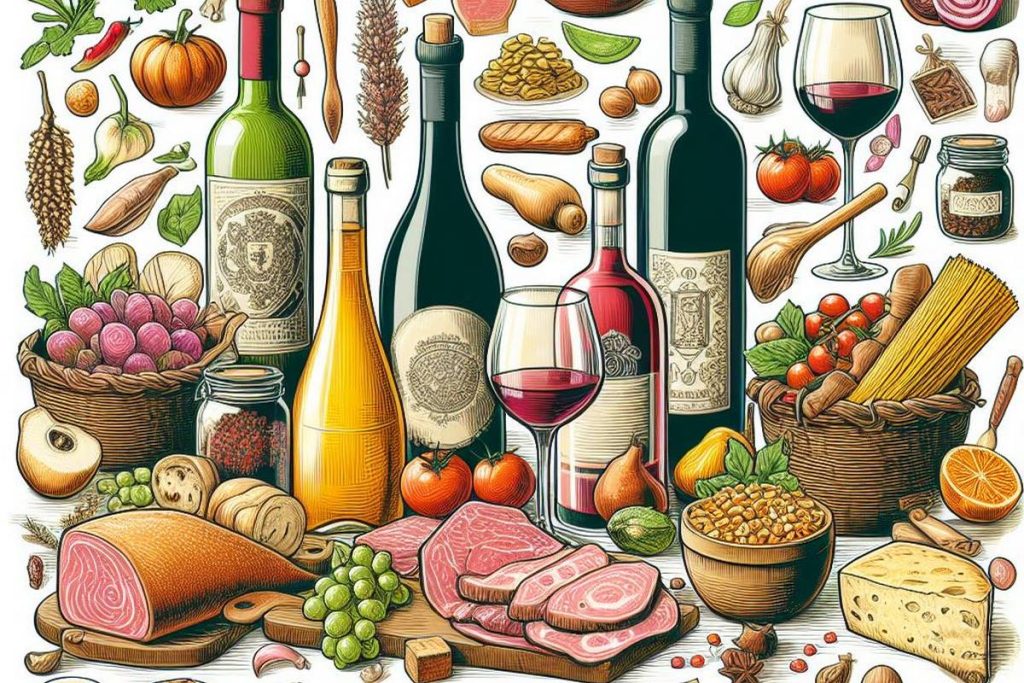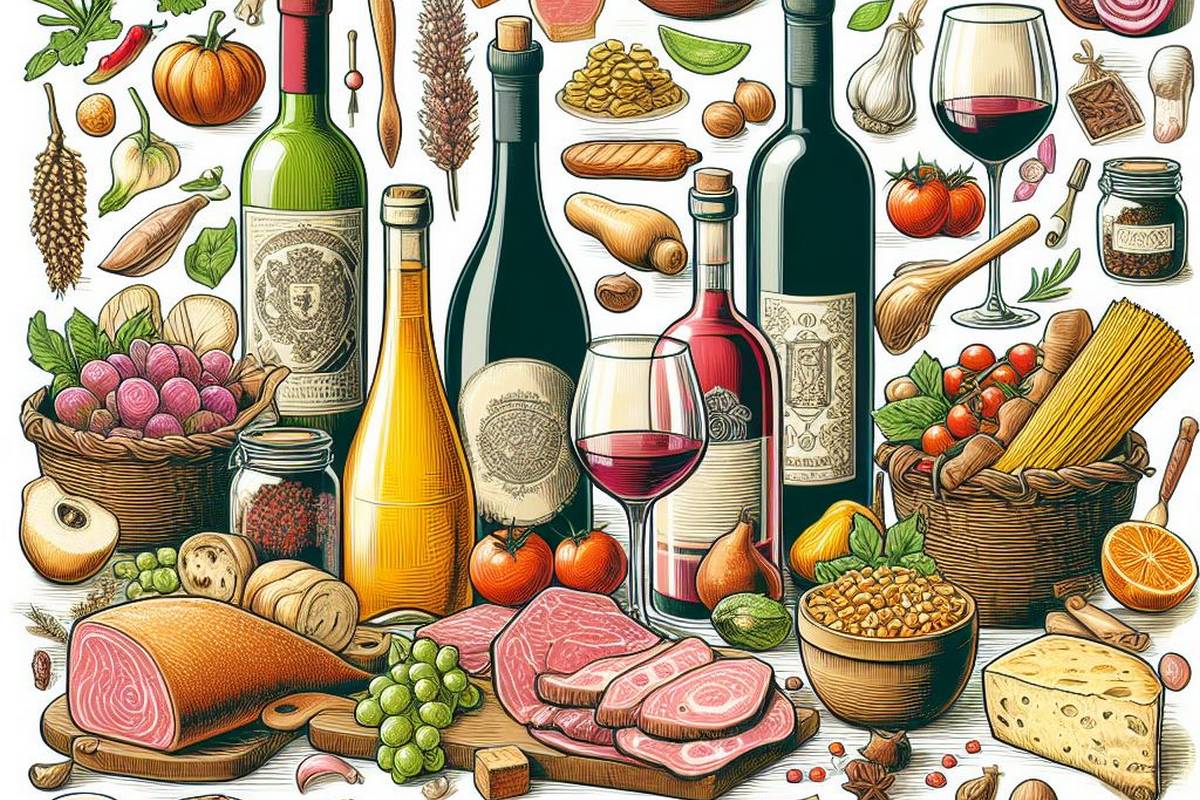When it comes to dining, there’s nothing quite like the perfect combination of food and wine. A well-paired glass of wine can elevate a dish and enhance its flavors, creating a truly unforgettable dining experience. But with so many types of wine and dishes to choose from, how do you know which ones go together? Here’s a guide to food and wine pairing to help you taste the dishes in the best way possible.

1. Consider the characteristics of the food and wine
The first step in pairing food and wine abbinamento cibo vino is to understand the characteristics of both. This includes the body, acidity, and flavor profile of the wine, as well as the richness, spiciness, and texture of the food. Generally, a full-bodied wine pairs well with a rich and hearty dish, while a light-bodied wine complements a lighter and more delicate dish. Similarly, a high-acidity wine can cut through the richness of a fatty dish, while a low-acidity wine can balance out the spice in a dish.
2. Match the intensity of the flavors
Another key factor to consider is the intensity of the flavors in both the food and the wine. A bold and flavorful dish, such as a steak or a spicy curry, will pair well with a bold and full-bodied wine, like a Cabernet Sauvignon or a Syrah. On the other hand, a light and delicate dish, such as a seafood salad or a vegetable stir-fry, will pair better with a light and crisp wine, such as a Pinot Grigio or a Sauvignon Blanc.
3. Pair complementary flavors
When it comes to food and wine pairing, it’s important to remember that opposites attract. This means that pairing complementary flavors can create a harmonious balance in your palate. For example, a sweet and spicy dish, like a barbecue chicken, will pair well with a slightly sweet and fruity wine, like a Riesling or a Gewürztraminer. A rich and creamy dish, such as a pasta Alfredo, can be balanced out with a crisp and acidic wine, like a Chardonnay or a Chenin Blanc.
4. Consider regional pairings
One of the easiest ways to pair food and wine is to look at regional cuisine like abbinamento cibi vini regionali , This is because the food and wine from the same region often naturally complement each other. For instance, a classic Italian dish, such as a pasta Bolognese, will pair perfectly with an Italian wine, like a Chianti or a Barbera. Similarly, a French dish, such as Coq au Vin, will pair well with a French wine, like a Pinot Noir or a Bordeaux.
5. Experiment and trust your taste buds
While there are some general guidelines for food and wine pairing, it’s important to remember that everyone’s palate is different. What may be a perfect pairing for one person may not work for another. So, don’t be afraid to experiment and trust your taste buds. If you find that a certain food and wine combination works well for you, then go for it! The ultimate goal of food and wine pairing is to enhance your dining experience and please your taste buds.
Food and wine pairing is all about finding a balance and complementing flavors. By considering the characteristics of both the food and the wine, matching the intensity of flavors, pairing complementary flavors, and looking at regional pairings, you can create a delicious and harmonious dining experience. But don’t forget to trust your own taste buds and have fun exploring different food and wine combinations. Cheers to a delicious and unforgettable dining experience!
Food and wine pairing
is an art that has been practiced for centuries, with the goal of finding the perfect balance between flavors and enhancing the dining experience. While there are no hard and fast rules, there are some general guidelines and examples that can help you create a harmonious pairing of food and wine.
First and foremost, it is important to understand the basic characteristics of both food and wine. Food can be classified into five main tastes – sweet, sour, salty, bitter, and umami, while wine has four basic components – acidity, tannins, alcohol, and sweetness. The trick to a successful pairing is to match these components in a way that complements and enhances each other.
Classic example of pairing
- One classic example of this is pairing a rich and fatty dish, such as steak or roasted duck, with a tannic red wine like Cabernet Sauvignon. The tannins in the wine help to cut through the richness of the dish and cleanse the palate, leaving a smooth and balanced finish. Similarly, seafood dishes, with their delicate flavors, are best paired with a light white wine like Sauvignon Blanc or Pinot Grigio, which complements the seafood without overpowering it.
- Another example is pairing acidic foods, such as citrusy salads or tomato-based dishes, with high-acid wines like Sauvignon Blanc or Chianti. This pairing creates a balance between the acidity in the food and the wine, creating a refreshing and crisp taste. On the other hand, if you are serving a creamy or buttery dish, it is best to pair it with a low-acid wine like Chardonnay, which helps to balance out the richness of the food.
- Spicy food can be a bit tricky to pair with wine as the heat can intensify the alcohol and tannins in the wine, leading to an unpleasant taste. In such cases, it is best to opt for low-alcohol wines like Riesling or a fruity red wine like Zinfandel. These wines have a touch of sweetness that helps to balance out the spiciness of the food.
When it comes to dessert, it is essential to pair it with a wine that is sweeter than the dessert itself. For example, a rich and decadent chocolate dessert can be paired with a sweet red wine like Port or a dessert wine like Moscato. The sweetness of the wine helps to balance out the bitterness of the chocolate and creates a delectable combination.
Apart from the basic characteristics of food and wine, it is also essential to consider the cooking method, sauce, and seasonings used in the dish. For instance, grilled or charred dishes pair well with smoky wines like Syrah or Malbec, while dishes with creamy sauces are best paired with creamy and full-bodied wines like Chardonnay.

Consider the regional pairing
In addition to matching flavors, it is also important to consider the regional pairing of food and wine. For example, dishes from Italy, like pasta and pizza, are traditionally paired with Italian wines like Chianti or Barbera. This not only creates a harmonious pairing but also enhances the cultural experience of the meal.
In conclusion, food and wine pairing is an art that requires a bit of experimentation and knowledge about the basic characteristics of both. It is essential to remember that there are no rigid rules, and the ultimate goal is to create a harmonious and enjoyable dining experience. So, the next time you are planning a dinner party or a date night, don’t forget to consider the food and wine pairing for a complete and satisfying meal.
